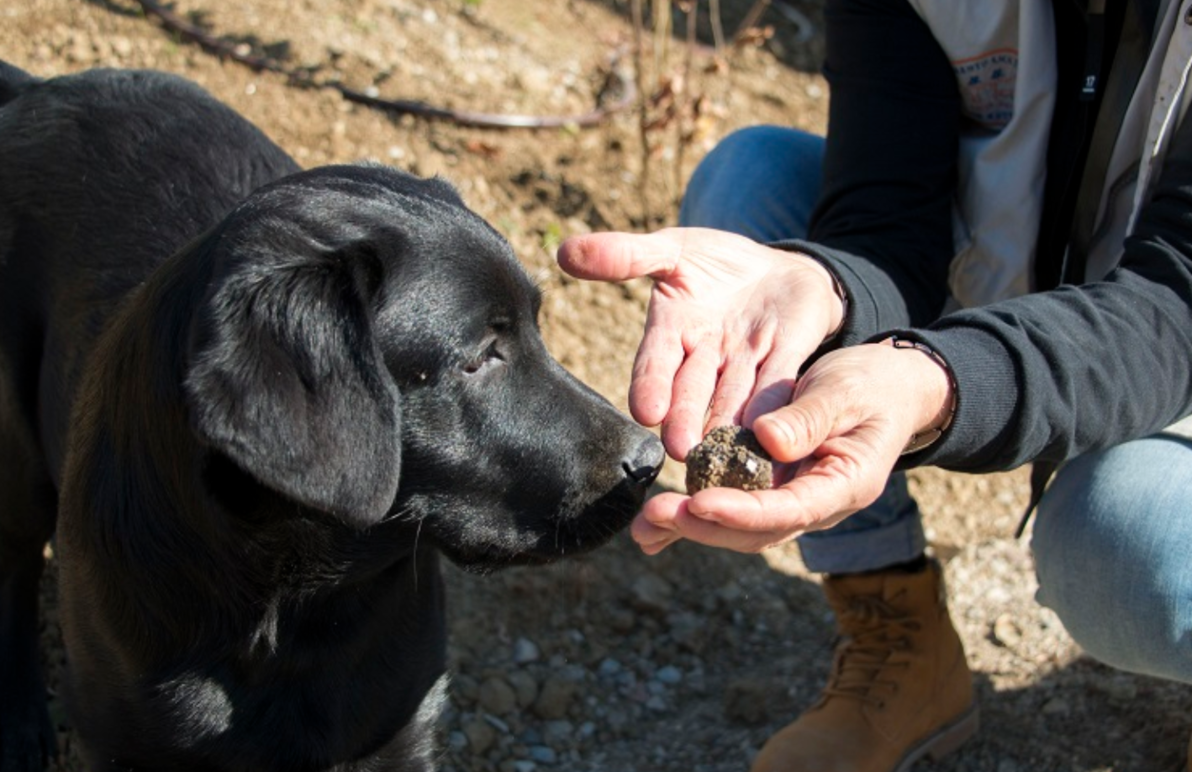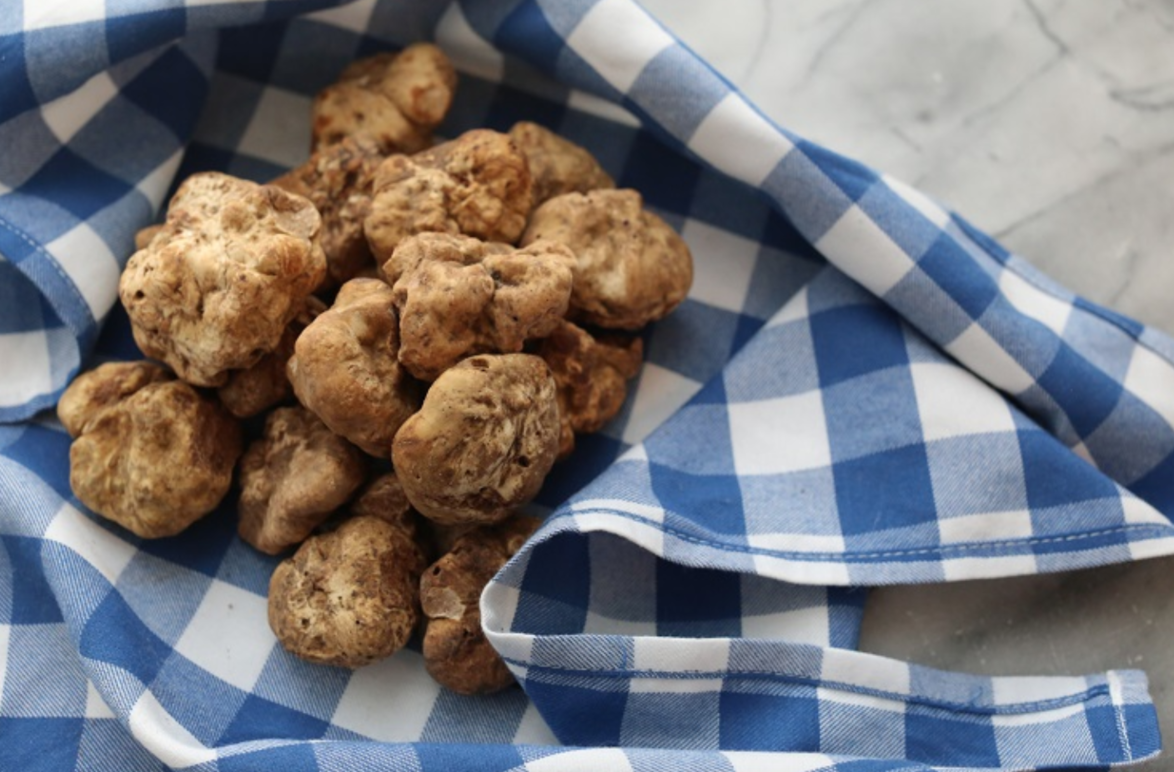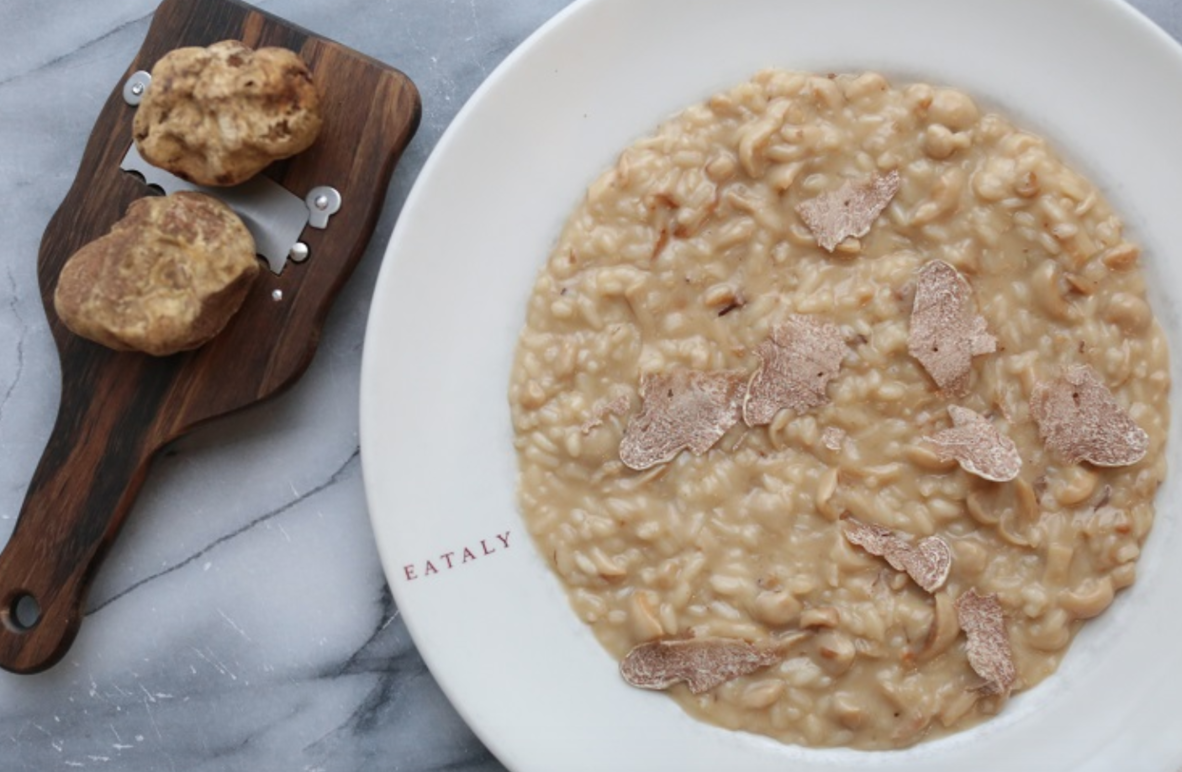All About White Truffles
Across the globe, Italy is known as the premier location for hunting and foraging truffles, which grow only a few months each year. As we approach the heart of white truffle season, discover what you need to know about the prized tuber, from forest to table with our guide below!
WHAT ARE WHITE TRUFFLES?
Truffles are tubers that grow a few inches underground. They thrive close to roots of hardwood trees like oaks, hazelnut, and chestnut. While all truffles are deeply valued, the white truffle from Alba (a particular species called tuber magnatum) is the most desired for its unforgettable flavor. They have a knobby shape, firm flesh, and pale golden color. White truffles are sought after for their larger size (as big as 9 centimeters in diameter!), limited quantity, and quality of taste.
WHAT DO WHITE TRUFFLES TASTE LIKE?
The golden, spongy tuber boasts pleasantly pungent aromas that give way to deep, earthy flavors from its cream-colored center. We love to shave the truffle in paper-thin slices over a variety of dishes, from pasta and risotto to eggs and meat.
WHERE DO WHITE TRUFFLES GROW?
Every fall, Alba is enveloped in white truffles as citizens — along with the rest of the culinary world — eagerly await the daily arrivals. But before reaching the table, the white truffle undergoes on a unique journey.
White truffle season is from September to December when they grow wild in the forests around Alba, a small Piemontese township. In particular, they grow deep in the forests of Langhe, a fertile area in Piemonte perfectly situated between the Tanaro and Po Rivers and the Alps and Apennine mountain ranges. Le Langhe comprises rolling hills filled with vineyards and hilltop towns known for producing great wines, cheeses, and — of course — truffles. The soil is primarily clay and marl, allowing the truffle to grow larger around the roots of oak, poplar, and linden trees.
Each is individually sniffed out by a dog, which a professional truffle hunter has trained since puppyhood to detect the unique scent. (Truffles were once hunted by pigs, until we realized that pigs loved them as much as we do!) Once the dog reveals the location, the hunter digs out the truffle, gently cleans it, and finally shares it with the lucky recipient.




































i-Italy
Facebook
Google+
This work may not be reproduced, in whole or in part, without prior written permission.
Questo lavoro non può essere riprodotto, in tutto o in parte, senza permesso scritto.